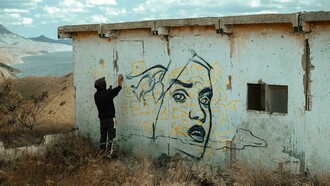All photographs are memento mori. To take a photograph is to participate in another person’s (or thing’s) mortality, vulnerability, mutability. Precisely by slicing out this moment and freezing it, all photographs testify to time’s relentless melt.
(Susan Sontag)
“Remember that you will die.” The Latin phrase, “Memento mori” was said to have been uttered by a soldier in ancient Rome to a general who was elated about the victory of war. Later, the saying spread throughout Christian teachings about life’s impermanence, equality of death and salvation of the soul.
More increasingly than before, our world today no longer views death as a bewilderment. Ongoing war casualties, fatal accidents, redundant crimes, natural disasters, the persistent pandemic, and sometimes, unexplainable loss of loved ones all overwhelm us. Death comes as an uninvited visitor that we are forced to embrace, even with reluctance and fear.
Art in the Middle Ages had illustrated skeletons dancing with human beings; ghosts and after-life creatures emerging from dreams and curious minds; and portraits of angels, saints and paradise compensating for the misery and enigma of eternal rest.
In “The Illumination of Life by Death: Memento mori&Photography” being shown at the Tokyo Photographic Art Museum until September 25 this year, photographs capture such moments of despair, quietude and resilience associated with cessation of life. Sceneries from history’s past constantly remind us of our limited time on earth. They attempt to open our minds to ways we can reconcile with the inevitability of mortality, in the hope of cherishing life’s fragility.
War photographers like Robert Capa (“Near Fraga (Aragon), November 7, 1938. Loyalist offensive along the Rio Se,” 1938), W. Eugene Smith (“From the series World War II,” 1944), and Kyoichi Sawada (“Flee to Safety,” 1965) document chilling battlefield scenes that provoke imminent dangers and risks, which can terminate life by a single blow. The captivating images evoke feelings of emotional devastation, yet call for prayers and signs of illumination.
Italian photographer Mario Giacomelli experienced the horrors of World War II, and experimented with new visual forms ignited by post-war political changes. His high-contrast technique reveals the bold use of double-exposure capabilities shadowed by soft focus, camera movement and slow shutter speeds. Images of hospice patients disclose another dimension of demise, reflecting old age and the frailty of our mind and body. The stark darkness of his subjects strikes an unfathomable depth weeded out from the white background. “From the series ‘Death will come and will have your eyes’”(c. 1954-1968) is one of Giacomelli’s most heart-pounding portraits, depicting an aged couple’s exchange of kiss. The faithful connection between them brings about shivery sentiments of mourning and tenderness wrapped in time. The photographer remarked,
What I was trying to show, rather than what I saw, was what was within me: my fear of getting old—not of dying—and my disgust at the price one has to pay for one’s life.
In Japan, Shinya Fujiwara is a leading photographer who vividly grasps the core of living kindled by the mask of death. A special room devoted to his colored visions of memento mori reflects his wanderings across Asia and his belief that living and dying are inescapably inseparable.
Immensely popular for his nonconformist nature and sensual photographic images, Nobuyoshi Araki often captured random shots of his wife in a solitary and melancholic mood. In his series Sentimental Journey (1971), his wife’s lonely gaze ironically camouflages their happy marriage, deliberately evoking the ephemerality of life and relationships.
Socrates once said, “Death may be the greatest of all human blessings.” Yet, it remains an obscure phenomenon of trepidation that people desperately avoid or carry over despite having no evident control over it. Instead, we may be missing the ultimate essence of nurturing fleeting moments temporarily bestowed upon us as the gift of being alive.















